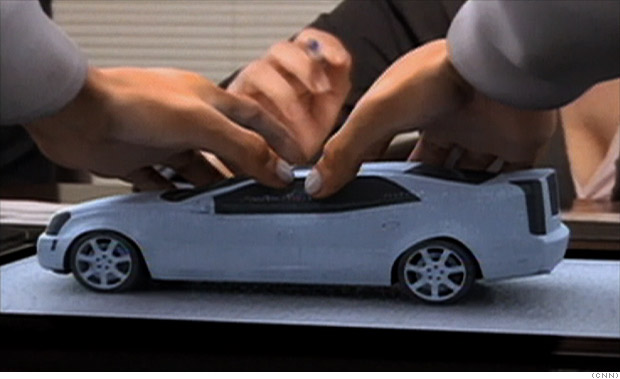
In this demo of Intel's "programmable matter" concept, designers adjust a 3-D model on the fly.
Imagine taking your smartphone out of your pocket, hitting a button, and watching your device instantly become a laptop. Or picture designing a 3-D model of something and having it pop out of a table for you to adjust its shape or color.
It seems far-fetched, but shape-shifting matter is something Intel is working on today. The company thinks it will be possible within the next decade.
The transformation could be accomplished by millions of tiny micro-robots working together to take a particular shape. Intel calls those sphere-shaped micro-robots "catoms." They'll possess enough computing power to be programmable -- so they can move or appear in a certain fashion -- and they'll eventually be about a tenth of a millimeter in diameter. Right now, Intel has built them about 1 millimeter across.
If catom material were used to make a device's casing, it would be theoretically possible for your smartphone, laptop or tablet to change shape. It could be tiny when you put it in your pocket but large when you want to type on it. It could fashion an earpiece when you want to use it as a phone, and have a large, flat keyboard when you want to browse the Internet at home.
Intel is focusing initially on the health sector: It hopes to provide 3-D visualizations of body parts scanned by MRIs, CAT scans or ultrasounds. Surgeons could interact with a model of something they're about to fix before they actually do the surgery, and doctors could study an organ in three dimensions while they're making a diagnosis. -David Goldman
NEXT: Seaweed-powered supersonic airplane